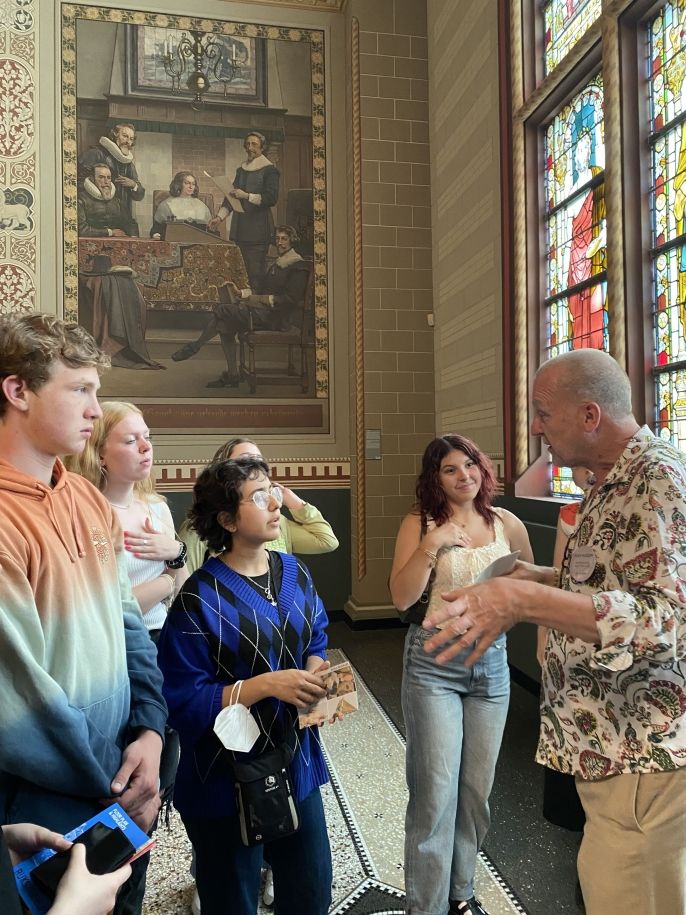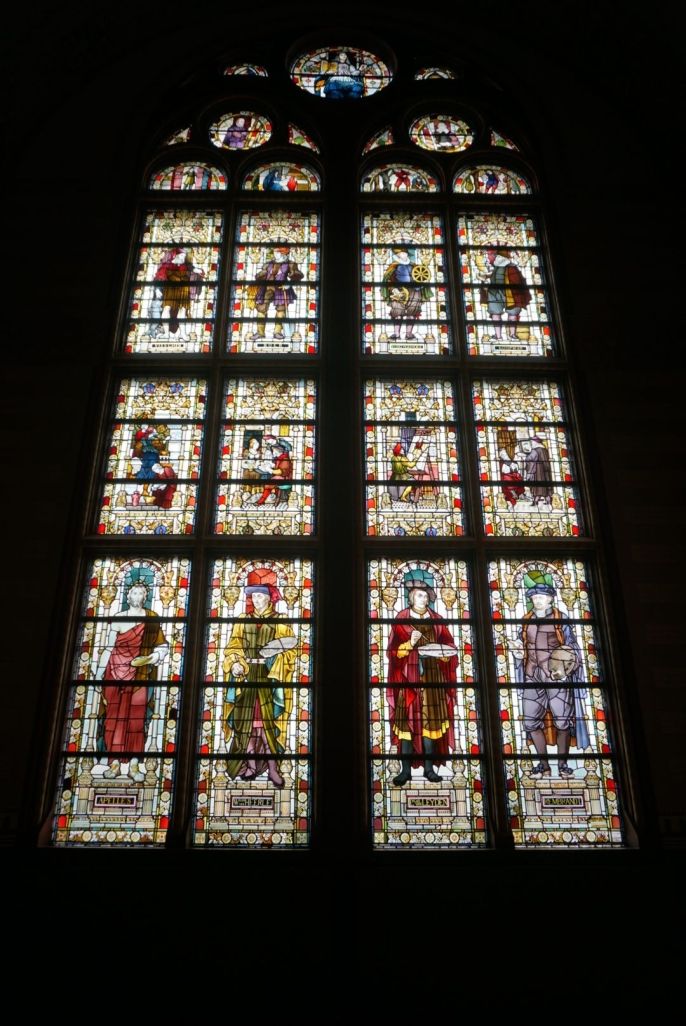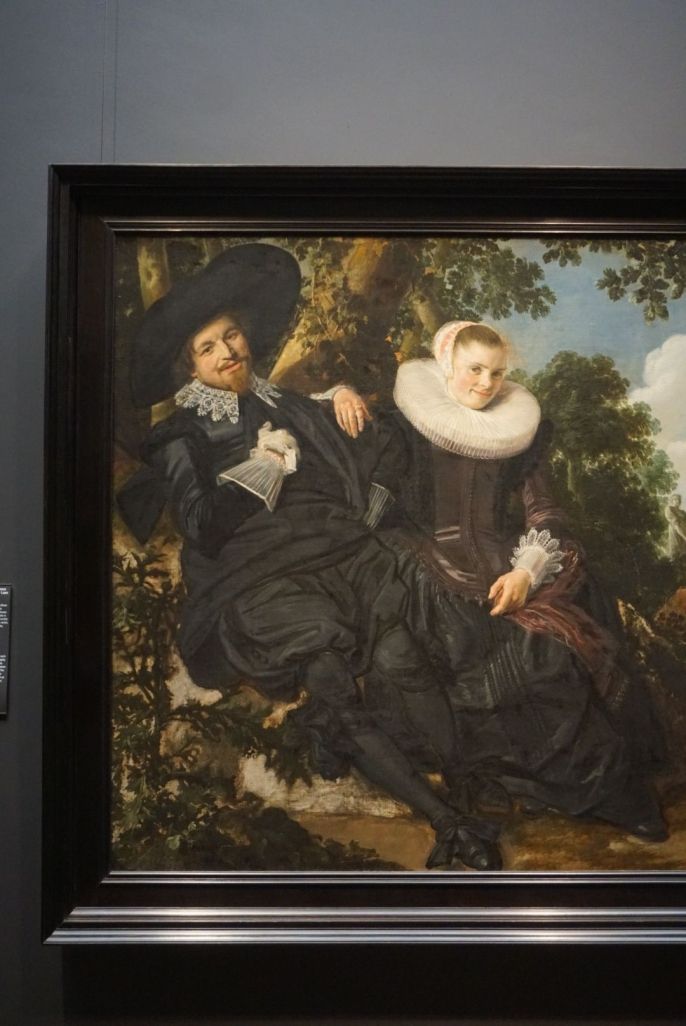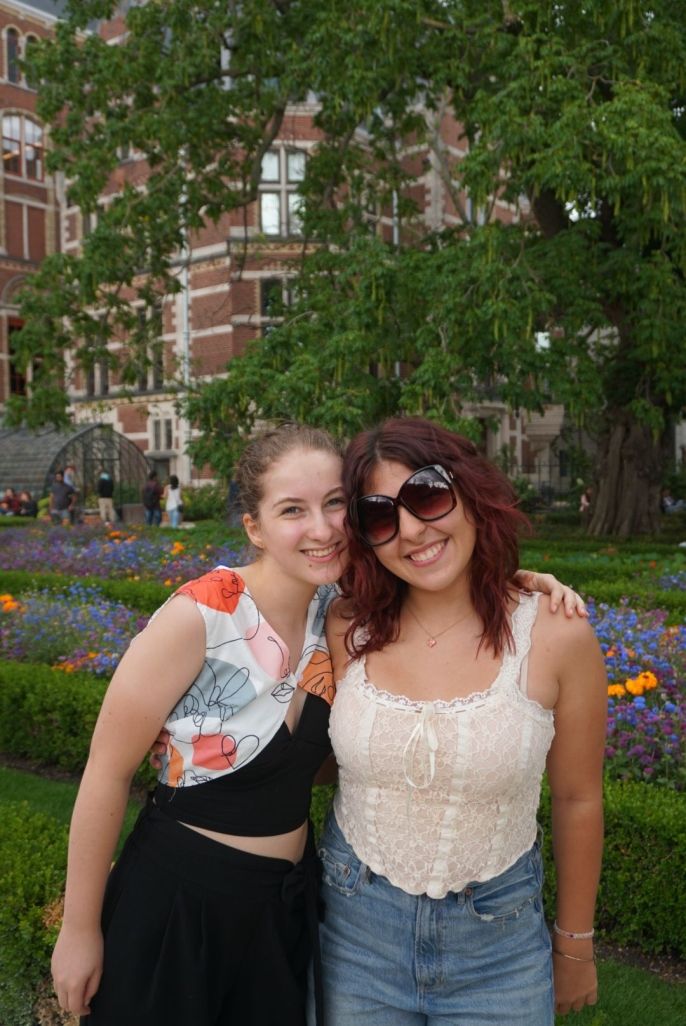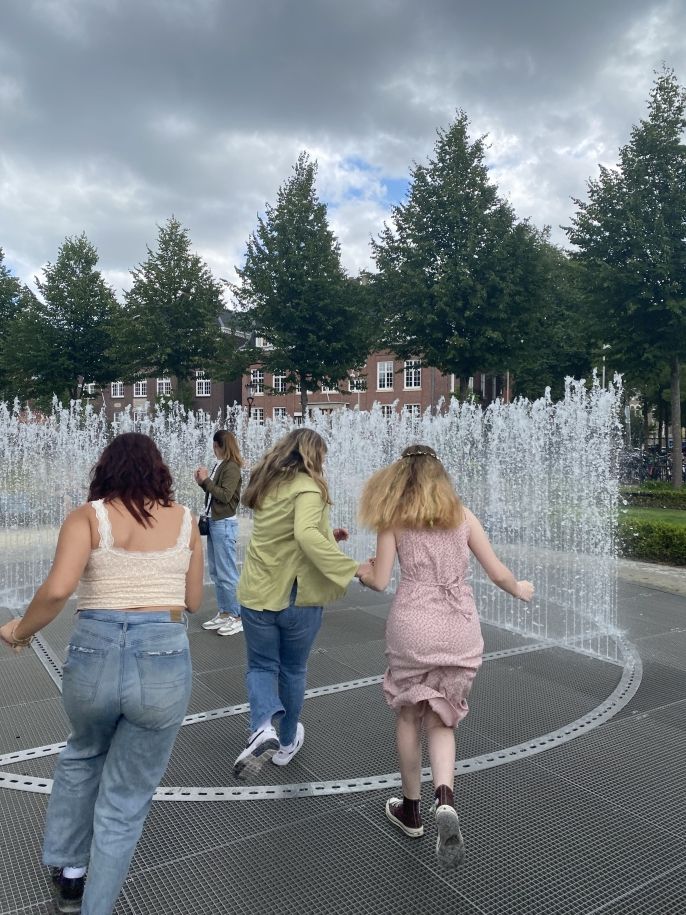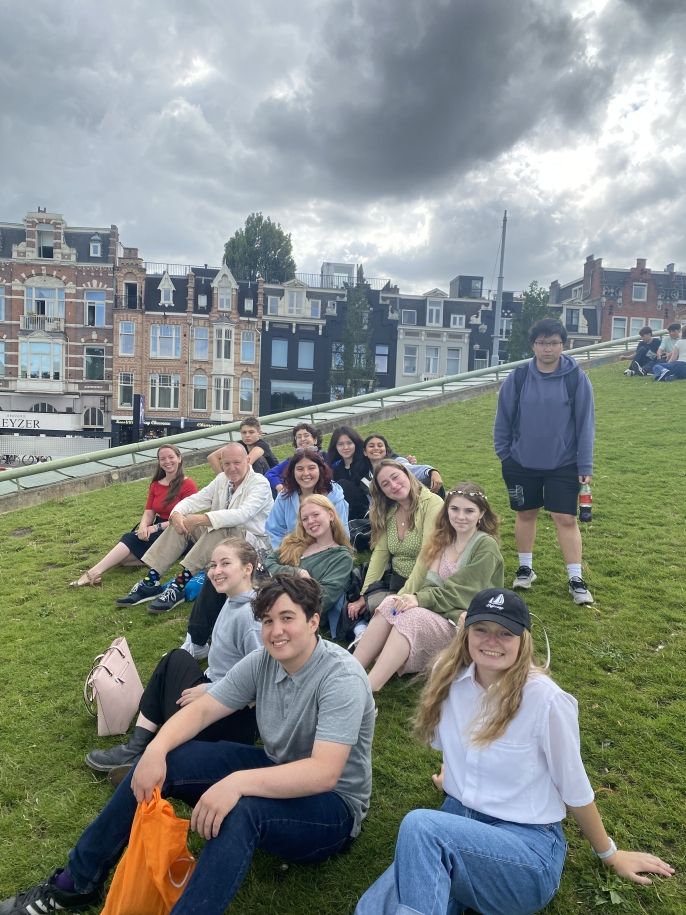Rembrandt & Reflections
Considered one of Europe's greatest collections of art, the Rijksmuseum houses over one million pieces and is surely a must-see for every visitor to the Netherlands. Works by the famous Dutchmen - Rembrandt, Van Gogh, and Vermeer, draw almost three million patrons each year and the building itself is something to behold. We met our tour guide extraordinaire, Jan, at the entrance and entered the tunnel under the Rijks, known for its fabulous acoustics. Bikes rushed passed us and people gathered arond a woman singing, Bocelli's "Con te Partirò" as we waited in line.
Jan's tour began in the Great Hall, where we were greeted by giant stained glass depictions of some of Europe's greatest artists and philosophers. We entered the 17th century exhibit, where Jan pointed out his favorite painting - a wedding portrait. Not your typical 17th century wedding portrait, the subjects in this painting were smiling - presumably, out of joy at becoming husband and wife. While many of us expected a collection of stuffy, contrived portraits exclusively for the 17th century elite, we were surprised by how many paintings captured ordinary moments from the lives of all types of people in this era - such as a maid pouring milk into a basin, a family having a party, or men riding horseback through the country.
We followed Jan into the ship room, which was full of detailed battle scenes at sea, two 400-year-old globes, swords used by Dutch navymen, and a model ship. Jan pointed out how many of he placards next to the paintings have been recently added to address the Netherlands' dark history of colonization and enslavement, a topic we will continue to explore and discuss in the coming weeks.
One of my favorite pieces was one which Jan had a personal connection to, located in the 20th century exhibit on the third floor. It was a piece submitted by his friend, Pemmy, who was interned in Sumatra during World War II. A young girl at the time, Pemmy was gifted a cloth ABC book made by her mother and the other women of the camp. She kept it for nearly 80 years, before donating it to the Rijks. Pemmy's ABC book is one piece which should not missed when visiting the Rijksmuseum.
After we finished pondering the artwork, we wandered the spectacular gardens and students spent time enjoying the fountain, before we headed out onto Musemplein for a debrief. A key part of every CIEE program, the time we spend reflecting on the events of the day helps students make deeper connections between what they already know, what they learn in class on program, and what they experience and observe around Amsterdam. Today we discussed the questions: What makes art valuable? and Who decides the meaning of a piece of art - the artist or the audience? We will dive even deeper into these themes over the next three weeks as we observe more from the Netherlands and Belgium.
Related Posts
Our Brussels Adventure Continues …
Tracy Morrison's Post: Day two led us to our first stop of the day, Experience Europe. This exhibition teaches students about the European Commission’s core work, priorities, policies and European... keep reading
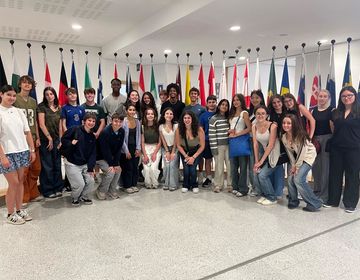
We're Off to Brussels!
Tracy Morrison's Blog Post: For our last weekend adventure in Europe we headed to Belgium. After a four hour bus ride we arrived at the bustling city center of Brussels... keep reading
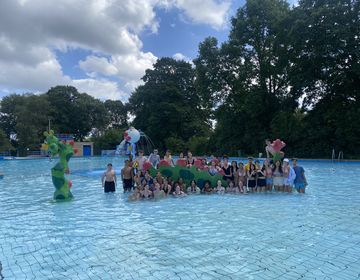
All Work and No Play? No Way!
While our students are very engaged with their classes and school work, they also love to explore and just have fun in this beautiful city! With our first week now... keep reading
